These Croatia travel tips will help you make the most of your trip to this stunning country. It’s home to impressive antiquities, enchanting old towns of cobblestone streets and terracotta-roofed stone houses, vineyards, olive groves, and pebbled beaches sloping into the crystal-clear Adriatic.
Its landscapes comprise mountain ranges, gorges, coastal plains, and most famously, hundreds of limestone islands scattered along the coast, many of them the peaks of long-submerged mountain ranges. It’s almost instantly recognizable as it’s a popular shooting location for major movies and TV series.
If you’re planning on traveling to Croatia, keep in mind these tips about its history, culture, and cuisine to ensure you’ll make the most of your visit.
Choose Your Season to Visit
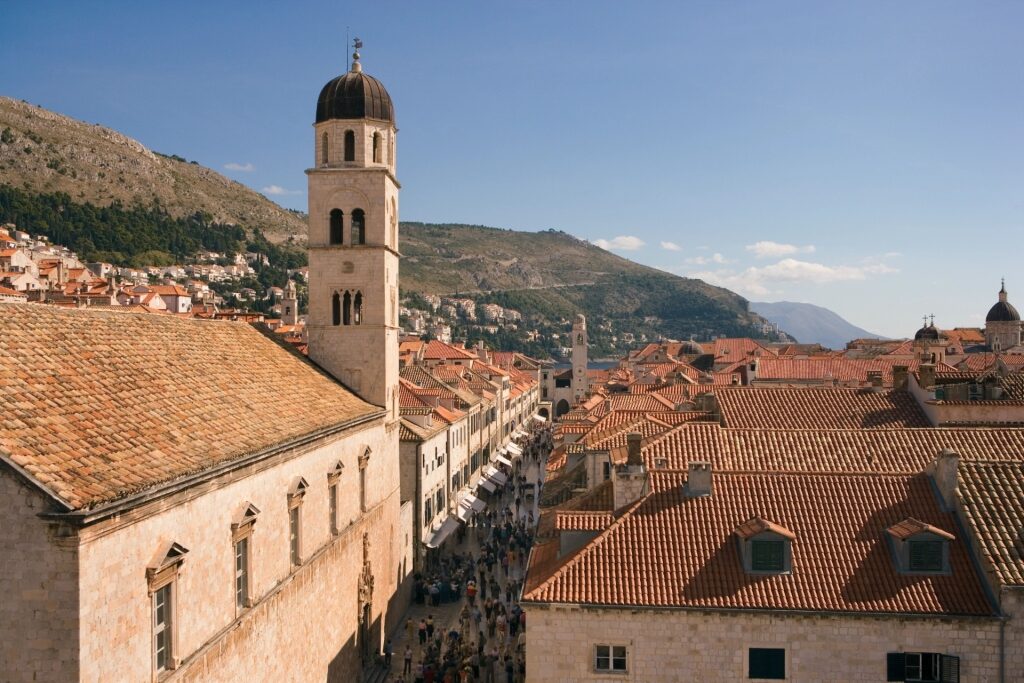
Old Town Dubrovnik
The time of year you visit Croatia will impact your perceptions and itineraries while traveling through this “land of a thousand islands.” The peak tourist season is June through August, offering warm, sun-drenched days for island hopping, swimming in the Adriatic, and checking out summer festivals.
In the summer, areas like Dubrovnik, Split, and Hvar are busy with visitors. For a more stress-free travel pace, consider traveling during the shoulder seasons, which fall between May to early June and September to late October and early November.
Shoulder season weather is usually in the mid-50s to low 70s Fahrenheit, which is ideal for sightseeing and escaping the sometimes muggy heat of summer. Of course, temperatures will be cooler in the mountains.
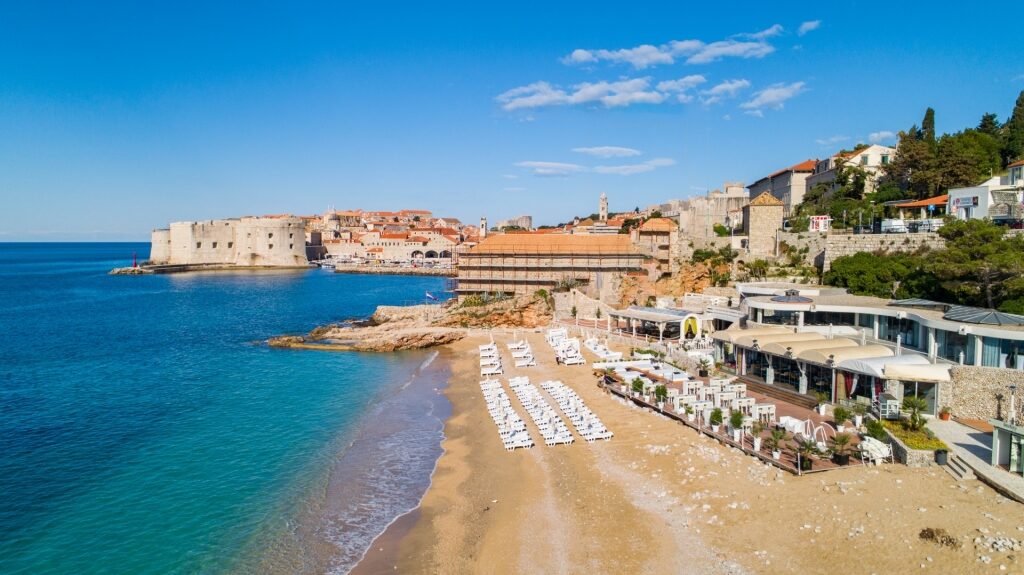
Banje Beach, Dubrovnik
The sea is usually still warm enough to swim in during early autumn, especially in southern Dalmatia. If you fancy visiting Croatia’s cultural and historical sites without throngs of summer tourists, spring is also a good option, with flowers beginning to bloom, adding to the scenery.
Pack Appropriate Clothing
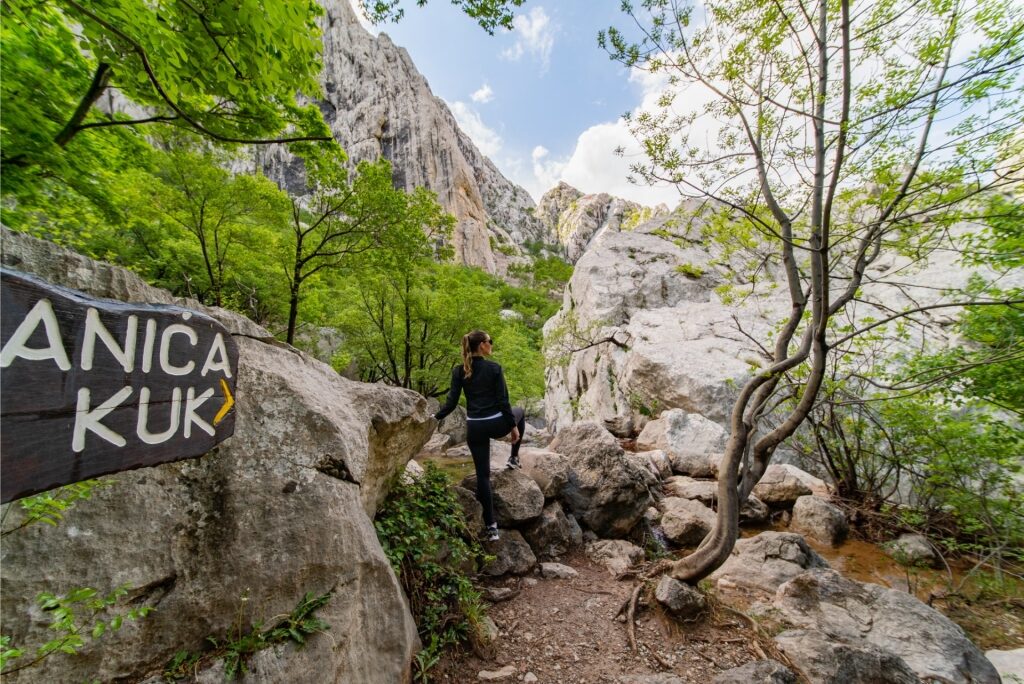
Paklenica National Park
Croatia’s diverse geography results in weather conditions that can change quickly depending on your location. The Mediterranean climate in coastal Dalmatia and the Istrian peninsula has dry summers, along with mild winters, when it often rains.
In comparison, away from the coast, you’ll run into a continental climate, which features colder winters and more dramatic seasonal changes. With such variations, packing for a variety of conditions is essential.
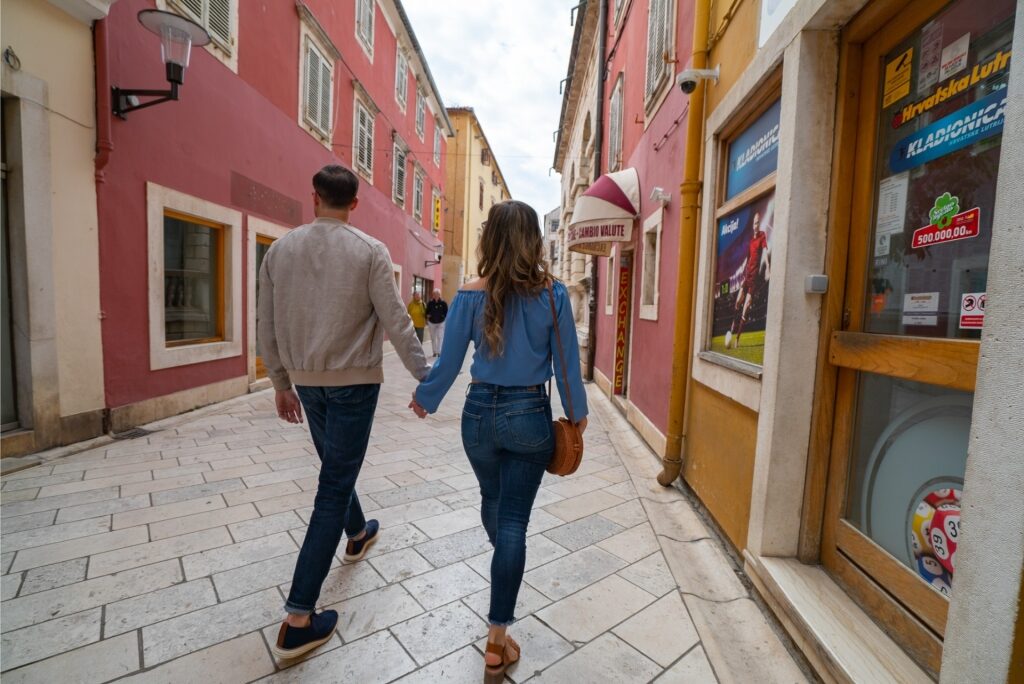
Zadar
Comfortable walking shoes should be at the top of your packing list since most of Croatia’s historic towns have cobblestone streets, and the national parks tend to feature lots of rugged terrain.
If you’re heading to the beaches or island-hopping, beachwear, a quick-drying towel, and waterproof hiking sandals or water shoes are a must, as most of Croatia’s beaches are composed of small pebbles rather than sand.
Lighter layers are important, too, especially in spring and autumn, letting you comfortably tackle chilly mornings and evenings. You’ll discover that a light rain jacket and fold-up umbrella will also come in handy.
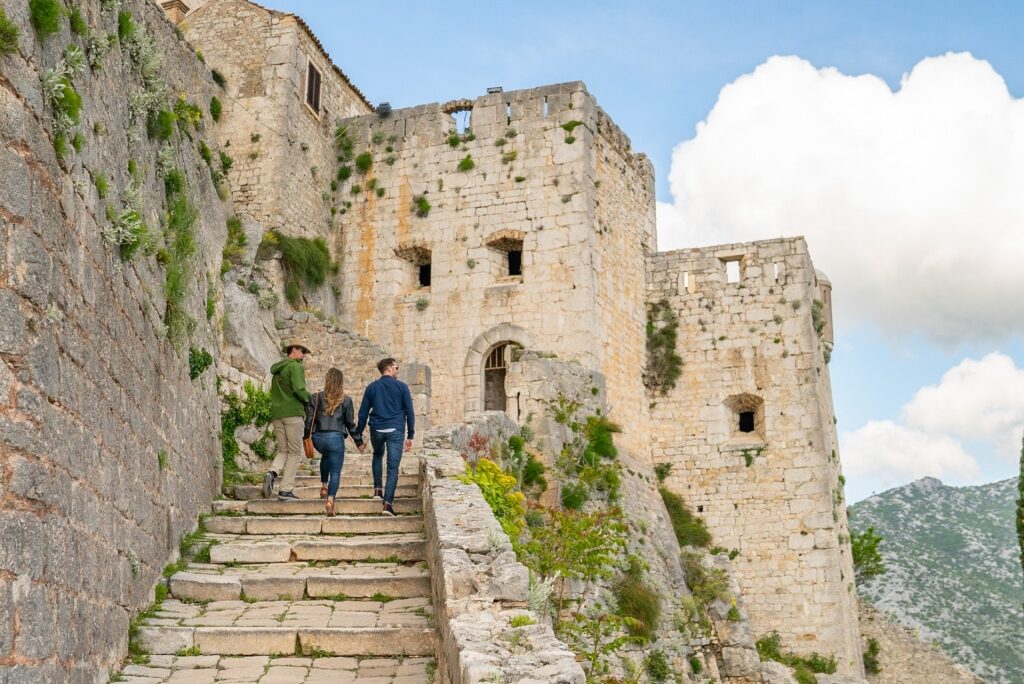
Klis Fortress
Sun protection is vital, as the Adriatic sun can burn. To that end, consider packing a wide-brimmed hat, sunglasses, and sunscreen.
If traveling over the winter months, pack warm clothes, a warm coat, gloves, and scarves, especially if headed to the interior. A universal power charger, refillable water bottle, and light daypack for carrying all of your gear are also useful items to have.
Finally, if you intend to visit churches and places of worship, dress respectfully. “Short” shorts and sleeveless tops are not appropriate for going inside a church. Away from the main tourist areas, communities in small villages can be quite conservative, so don’t wander around in swimwear.
Learn Some Basic Croatian History
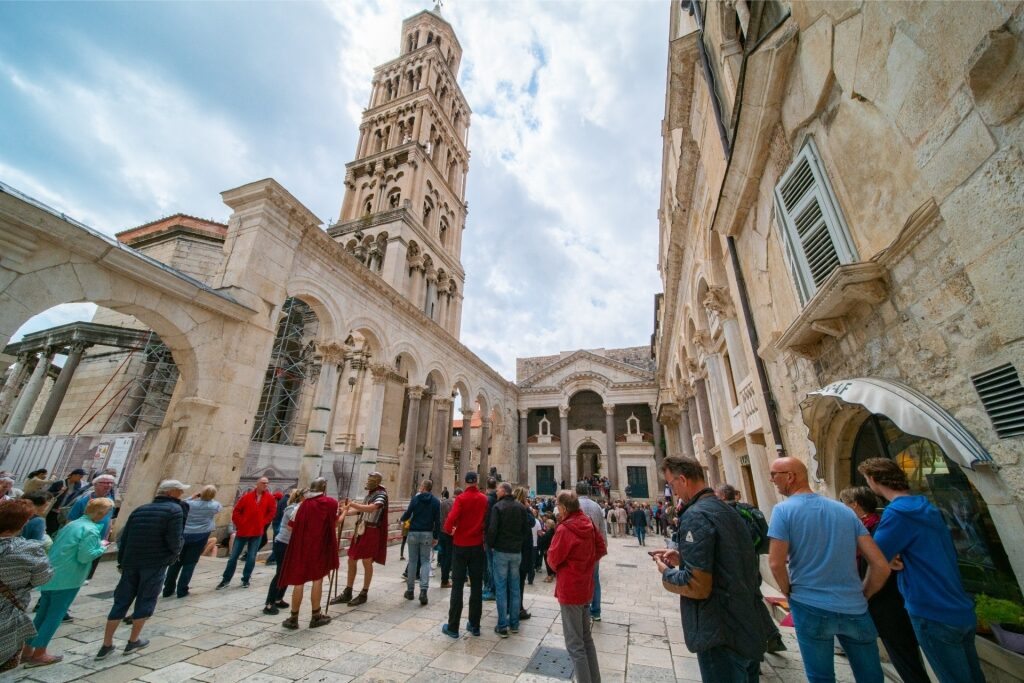
Diocletian’s Palace, Split
Understanding a bit of Croatian history will enrich your stay, particularly as many Croatians you meet will have lived through the Balkans conflict of the early 1990s.
Croatia was once part of the Roman Empire, remnants of which you can still see today in places like Diocletian’s Palace in Old Town Split and Pula’s impressive Roman amphitheater. The medieval period was marked by the rise of the sovereign Kingdom of Croatia, which later came under Venetian and Austro-Hungarian rule.
More recently, Croatia was part of Yugoslavia before it gained independence in the early 1990s after the brutal Homeland War—an event that has shaped much of this nation’s modern history and character. You can discover more about the conflict in places like the Homeland War Museum on top of Dubrovnik’s Mount Srd.
Explore the Coastal Cities
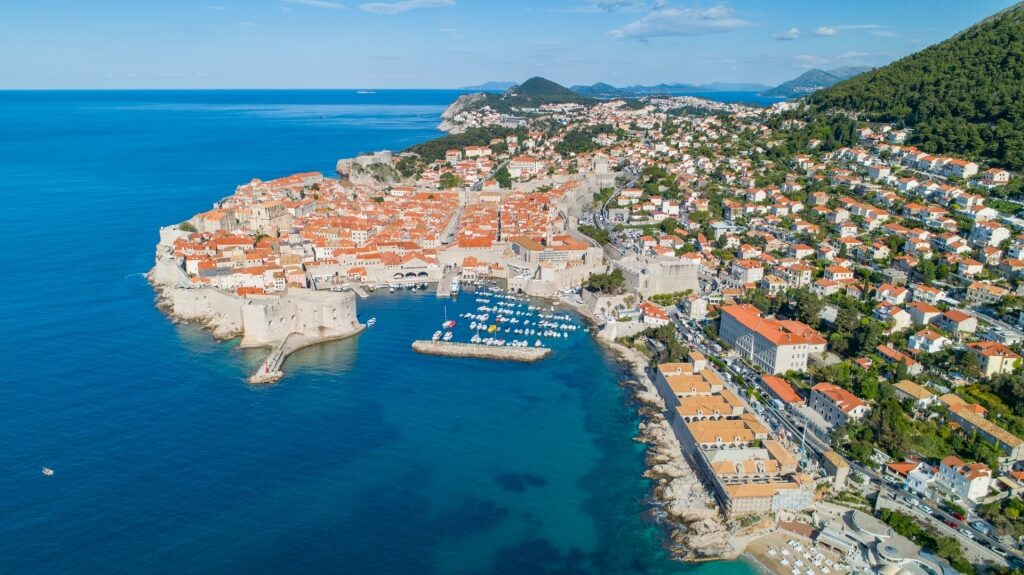
Dubrovnik
Croatia is known for its striking, ancient coastal cities that feature a beautiful fusion of culture, architecture, and natural scenery. From medieval strongholds to Roman ruins and lively waterfront promenades, this nation’s must-see cities are bound to impress.
To begin with, Dubrovnik, known as the “Pearl of the Adriatic,” is famed for its historic city walls, which enclose the Old Town and will offer you some fabulous views over the glittering Adriatic and the tiled red rooftops below.
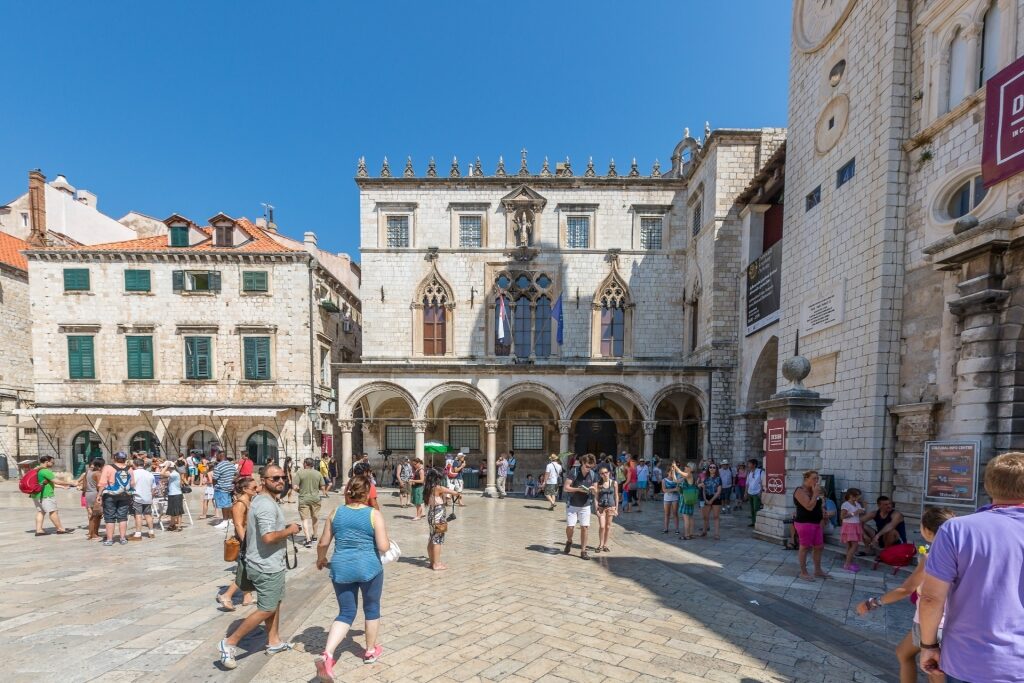
Sponza Palace, Old Town Dubrovnik
The walls stretch more than a mile in length, so allocate a few hours to walk the ramparts. Within the Old Town, you can lose yourself in a maze of narrow, cobblestone streets, where ancient landmarks such as the Rector’s Palace, the Gothic and Renaissance Sponza Palace, and the Franciscan Monastery—housing one of the world’s oldest pharmacies—await your visit.
To see the city from above, ride the Dubrovnik Cable Car to the top of Mount Srđ, where you’ll be treated to spectacular vistas of the walled city below, and a few islands in the distance.
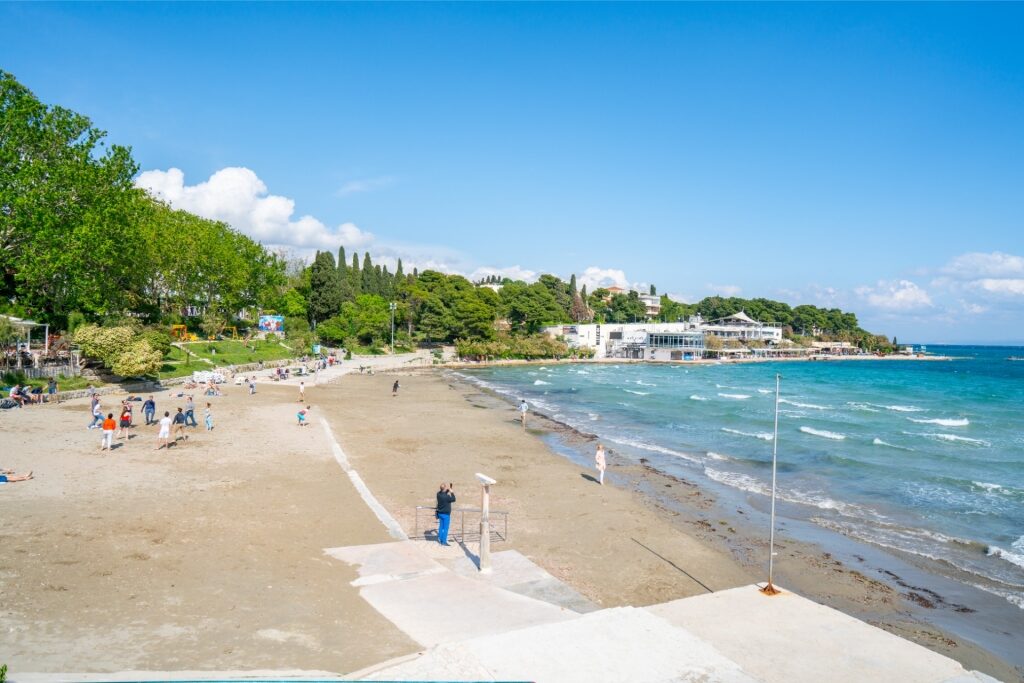
Split
Tourist life in Split, another dynamic coastal city lying northwest of Dubrovnik, tends to revolve around Diocletian’s Palace, a massive Roman complex that has now been transformed into a vibrant hub of restaurants, shops, and historical sites. Stroll through its marble streets and discover hidden courtyards, centuries-old basement hall cellars, and old peristyle columns.
Riva, Split’s divine waterfront promenade, is the ideal spot to sit and relax with a cup of coffee or gelato and watch people wandering past against the Adriatic backdrop. For panoramic vistas, hike up Marjan Hill for views across the city, nearby mountains, and the outlying islands.
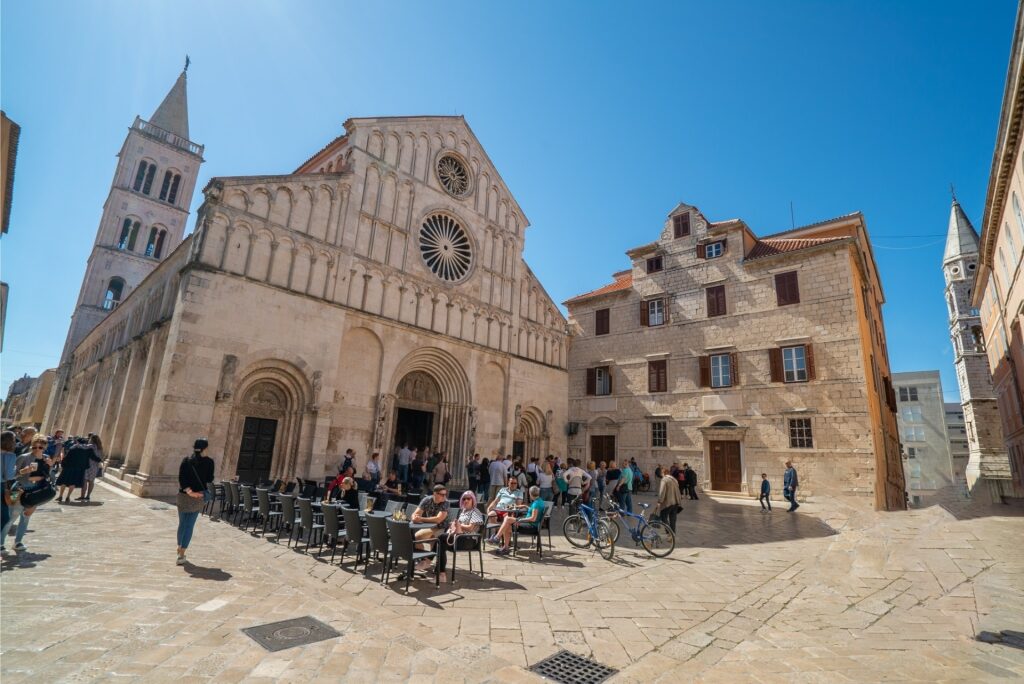
Cathedral of St. Anastasia, Zadar
Zadar, just over 70 miles northwest of Split, boasts an amalgamation of ancient and modern wonders, including the town’s “sea organ,” a large engineering project that plays hauntingly beautiful musical sounds, powered by the movement of the sea waves.
If you’re interested in history, a good Croatia travel tip is to set aside some time to stop by Zadar’s Roman Forum, a fascinating archaeological site that will transport you back to the era of the Roman Empire.
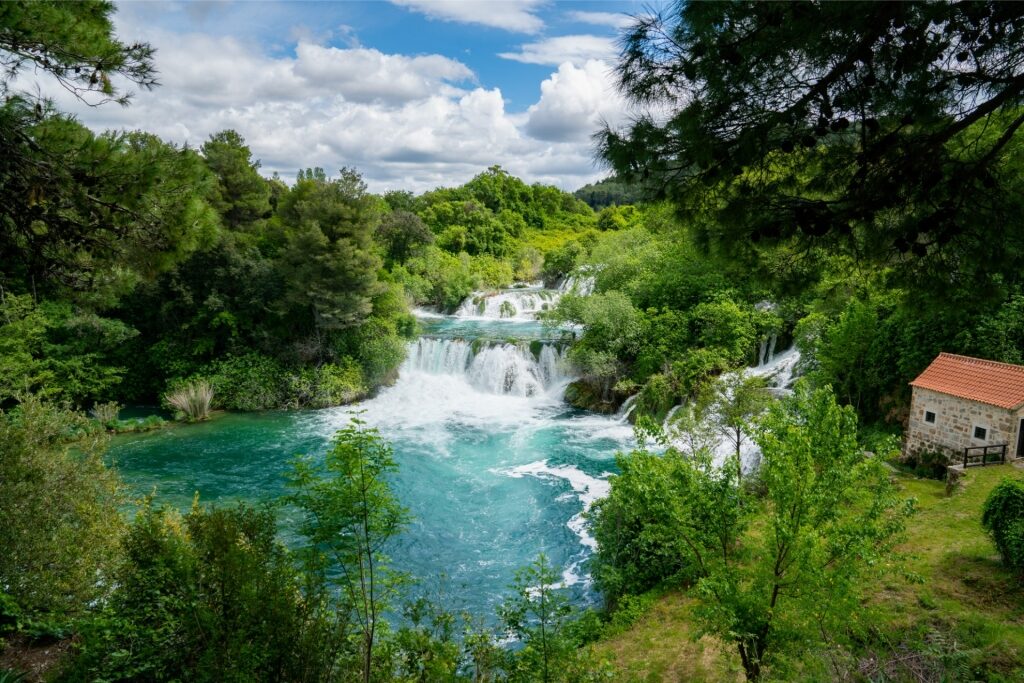
Krka Waterfalls
Aside from its historical significance, Zadar is also an excellent base for exploring nearby national parks, including Plitvice Lakes, with its tiered, cascading lakes, and the multi-tiered Krka Waterfalls, one of the most beautiful places in Croatia.
Enjoy Croatian Cuisine
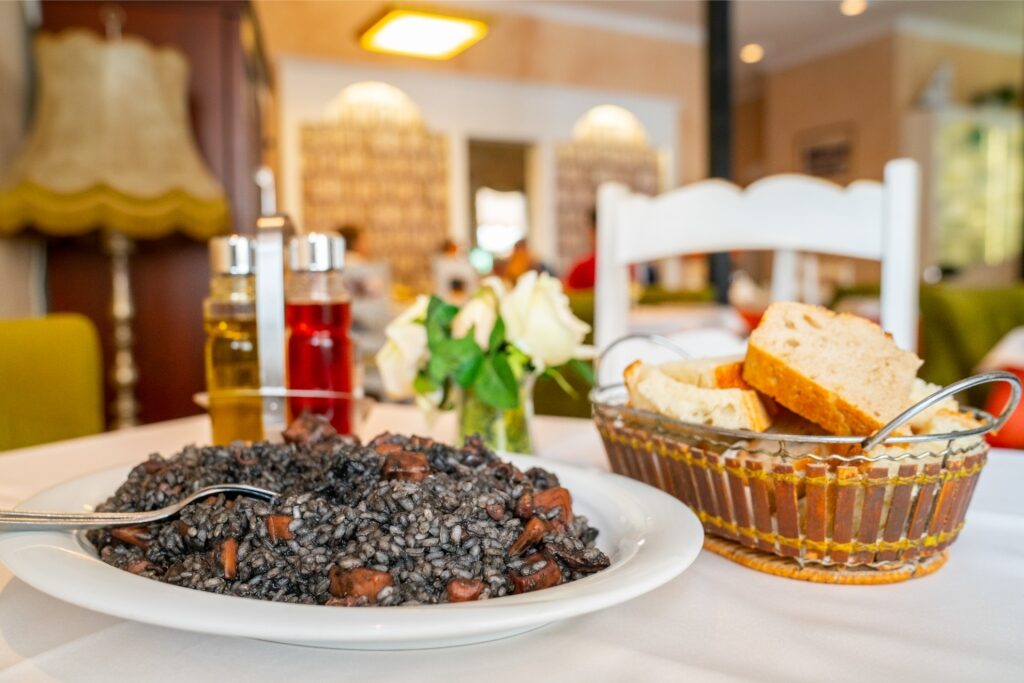
Black risotto
One of the most important Croatia travel tips is to embrace the local cuisine. Croatian food is a fabulous blend of Mediterranean and central European influences, with an emphasis on fresh, locally grown ingredients.
Seafood enthusiasts will be in paradise, with the nation’s long coastline providing a steady supply of fresh fish, squid, and octopus, which are frequently grilled and served with olive oil and herbs.

Peka
Peka, a dish in which meat, typically lamb or veal, as well as octopus and vegetables, are slow-cooked under a bell-shaped lid, is one hearty dish with deep and smoky flavors that you’ll want to sample while touring the country.
In Istria, truffle aficionados will have the opportunity to try this peninsula’s renowned truffles, especially the white ones, which are regularly used as a topping for pasta—including chewy Istrian hand-rolled pljukanci—risotto, and even desserts.

Croatian wine
Croatia’s wine culture is something to pay attention to as well. Wine-producing regions like Istria, Dalmatia, and Slavonia, along with a varied assortment of native grapes, such as Plavac Mali for rich reds and Malvazija for crisp whites, will keep wine enthusiasts captivated.
No culinary adventure in Croatia would be complete without trying some rakija, a strong fruit brandy that comes in different flavors, ranging from notes of honey to plummy and herbal. It’s typically served as a welcome drink, so if offered, make sure you join the toast.
Experience Islands and Beaches
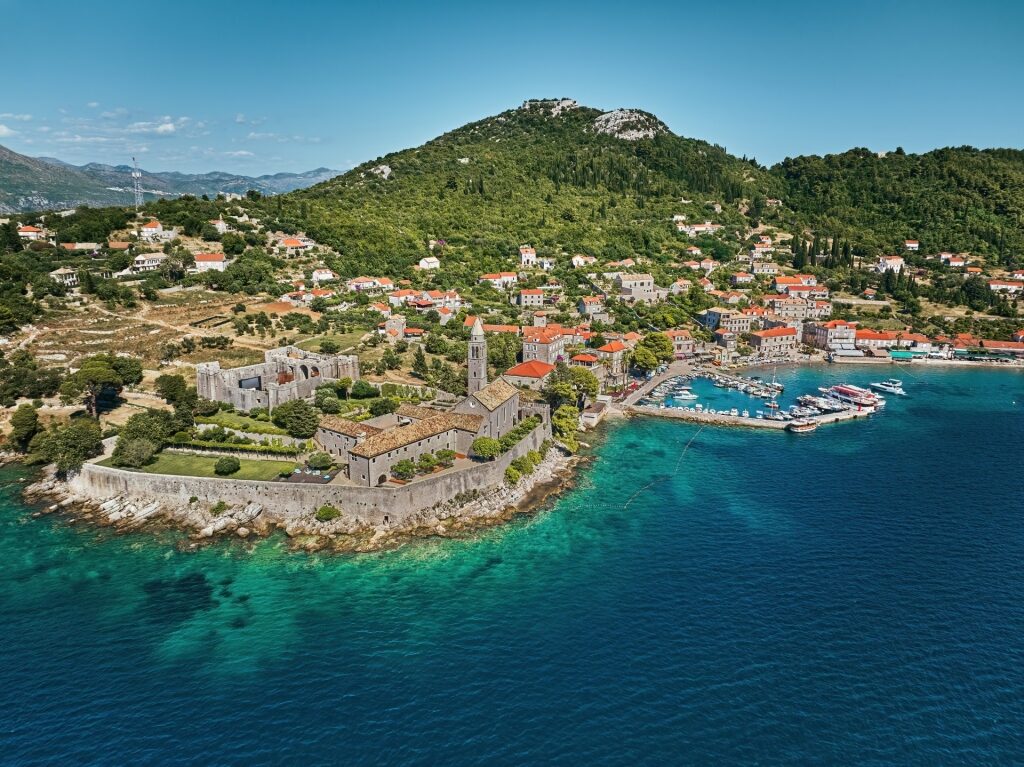
Lopud
Traveling to Croatia is all about exploring the islands and beaches. Croatia’s coastline is dotted with over a thousand islands, from party islands to serene nature retreats.
Near Dubrovnik, the Elaphiti Islands of Šipan, which is filled with olive trees, Lopud, and Koločep will provide you with tranquil escapes, including secluded coves, sandy beaches, and postcard-perfect fishing villages.
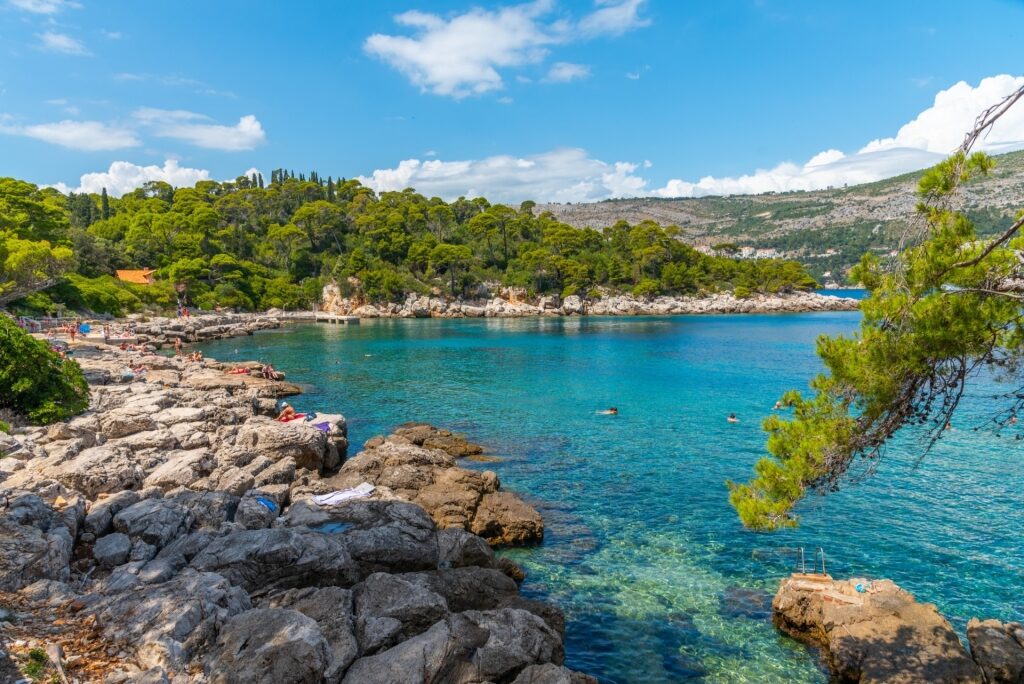
Lokrum
One of the best things to do in Dubrovnik is to take a short ferry ride to Lokrum, which delights with its medieval Benedictine monastery, botanical gardens, and a small saltwater lake known as the “Dead Sea,” in which you can swim.
Hvar, near Split, is an island famous for its nightlife and purple lavender fields, while Brač is home to the celebrated Zlatni Rat beach, a pointy spit of white pebbles jutting out into the sea.
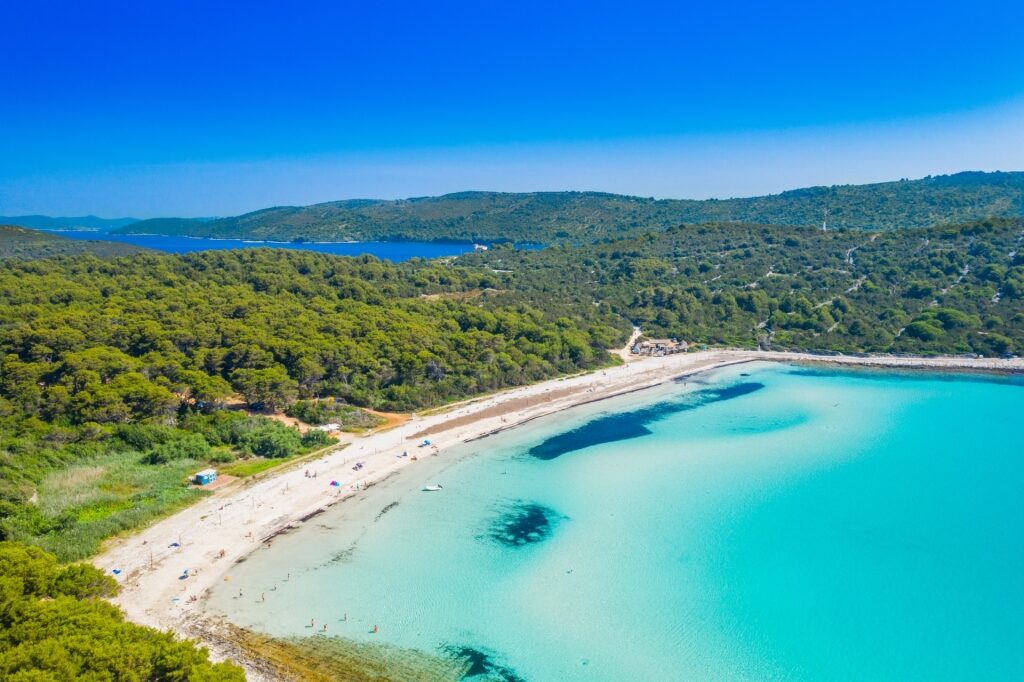
Sakarun Beach, Dugi Otok
For a truly off-the-beaten-path experience, head north to Zadar’s offshore pearls. The Kornati archipelago constitutes a breathtaking national park, perfect for hiking and snorkeling. Dugi Otok boasts beautiful cliffs, as well as the sandy Sakarun beach, a rare find in Croatia, featuring heavenly scenery.
To enjoy this nation’s beaches and islands, you can make use of the extensive ferry networks, charter a boat, or rent a kayak to explore more secluded islands and bays. Then, time allowing, dine on some fresh seafood at a seaside konoba, or tavern.
Be Aware of Language, Safety, and Croatian Culture
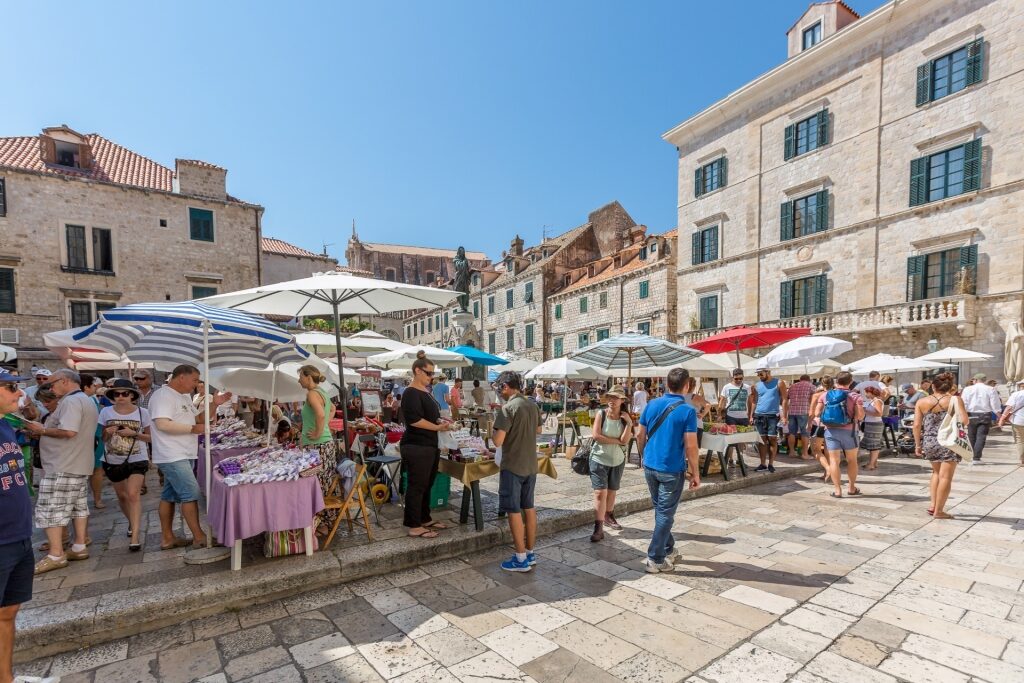
Old Town Dubrovnik
While English is widely spoken among Croatians, especially in tourist areas, a few basic words can go a long way in showing respect.
A cheerful “hvala” – thank you – or “dobar dan” – good day – will make life more enjoyable for everyone involved. When placing food orders, it’s considerate to use “molim” – please – when asking for something and “račun molim” – check, please – at the end of the meal. These small linguistic gestures can lead to more amicable encounters with the locals.
Croatia in general is a very safe nation with minimal crime. However, random petty offenses, like pickpocketing, do happen from time to time, particularly in markets, public squares, and areas with heavy tourist presences like Dubrovnik’s Old Town or Split’s Riva promenade.
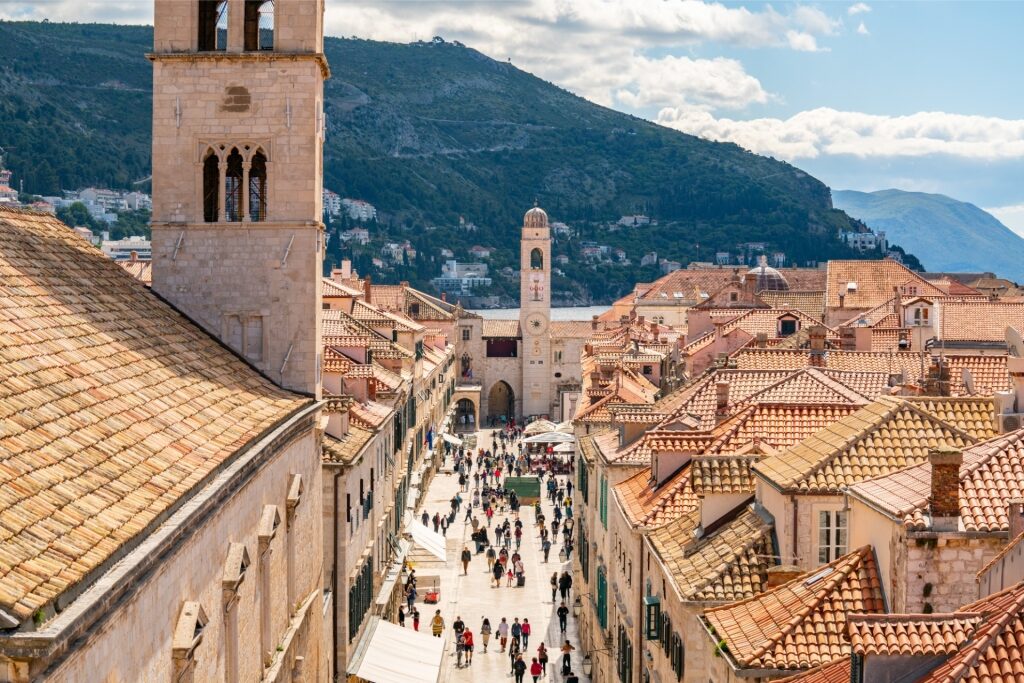
Stradun, Old Town Dubrovnik
Keep an eye on your belongings, especially in public, and avoid leaving valuables unattended on the beach.
Croatian tap water is clean and safe to drink, including on the islands, but bottled water is available if you prefer.
Croatians are a friendly and warm people but do try to respect their culture. Life is slower here. Coffee is drunk in a café, slowly, with friends, not walking around the streets. A lot of people smoke, which can come as a surprise.
Cash is king here, which is worth noting; when you pay for something in a restaurant, or even clothes in a shop, you’ll be asked “cash or card?” and inevitably, locals prefer cash. The currency has been the Euro since January 2023, although you may still see old Kuna prices, the former currency, on some menus, alongside Euro pricing.
Use Local Transportation

Boat in Dubrovnik
Getting around Croatia is relatively easy, and your choice of transportation will depend on your itinerary. If you plan to explore the Adriatic coastline and its many islands, ferries, as well as private boat charters, will be your best friend.
Croatia has an extensive network of ferries, the major operators being Jadrolinija and Krilo, which connect the mainland to different islands. For island-hopping excursions that are a bit shorter, Krilo’s high-speed catamarans provide a quicker alternative.
Croatia has a good, affordable bus network as well, with frequent services covering major destinations like Zagreb, Split, Zadar, and Dubrovnik.

Private car
For more freedom, consider renting a car, especially if you want to see some of Croatia’s interior regions, such as the Dalmatian countryside. Roads are decent and the highways are well-maintained, although do be aware that there are tolls on the main motorways.
In urban areas, taxis are widely available, as are ridesharing services like Uber and Bolt. If taking a taxi, always confirm the fare in advance or ensure the meter is running to avoid overcharging.
Read: Best Things to Do in Croatia
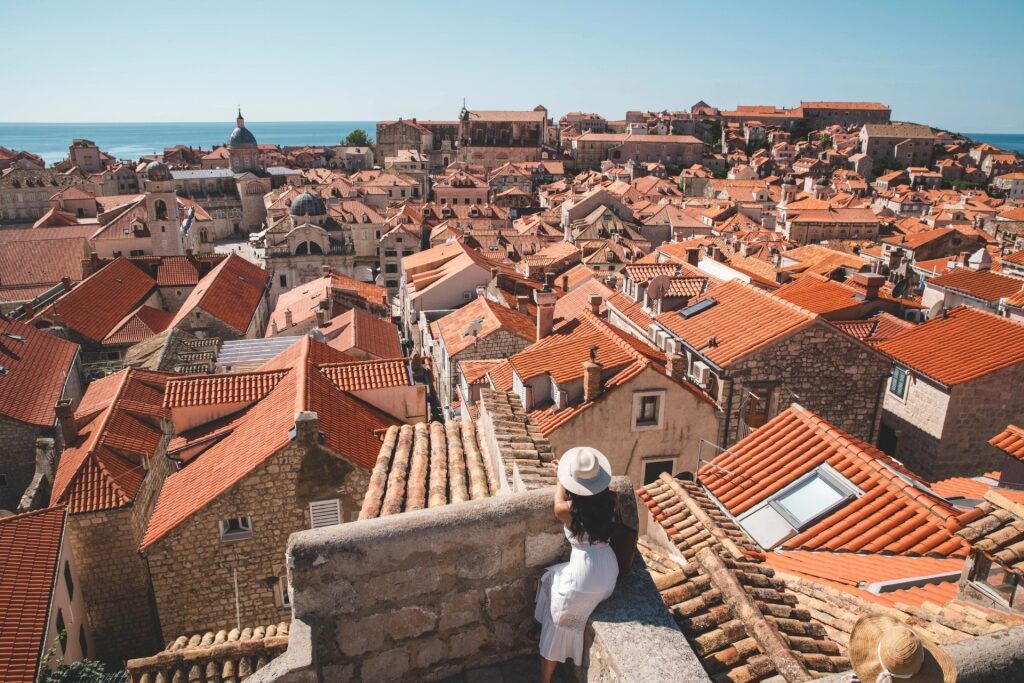
Old Town Dubrovnik
Browse Celebrity’s cruises to Croatia and discover picturesque coastal towns, sapphire seas, and ancient historic sites, while getting to know this welcoming culture.



